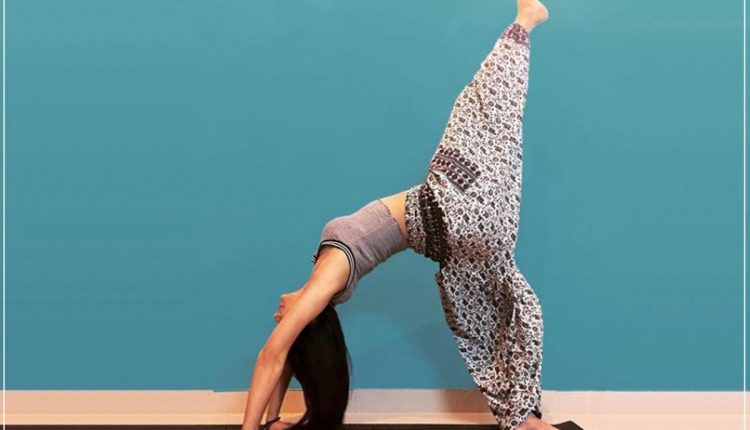
Yogi Israa Shafi Reveals 5 Asanas For PCOS!
Find out if there's a connection between the two!
Yoga is known to be helpful in alleviating stress, and high levels of stress have been associated with the development of PCOS. A calmer mind and body can help with the hormonal imbalance which is the leading cause of this condition. Pranayama (control of breath), meditation are as essential as yoga asanas as they play a vital role in stabilizing the nervous system and in turn your response to stress.
Yoga Asanas (postures) along with proper breathing can help in regulating the endocrine glands and also in opening up the pelvic region as we store stress not just mentally but also physically. Here are some Asanas that can help with balancing the hormones, releasing stress from the body over all. Please note that Yoga Asanas should be carried out under the guidance of a Certified Yoga Teacher. Discuss it with your physician before performing any of these postures:
1. Chakki Chalanasana (churning the mill):
Technique: Sit straight with legs stretched out in front of the body with the feet slightly flexed. Interlock the fingers of both hands and hold the arms out extended in front of the chest. Ensure to keep the arms straight without bending the elbows throughout the practice. Bend forward without straining. Imagine the action of churning the mill with an old fashioned stone grinder. Rotate from the waist to the right so that the hands pass above the right toes then over the left toes (moving in a circular motion). Lean back as far as you can with the help of your core. Repeat this rotation clockwise 5 to 10 times and then the same number of rounds anti-clockwise.
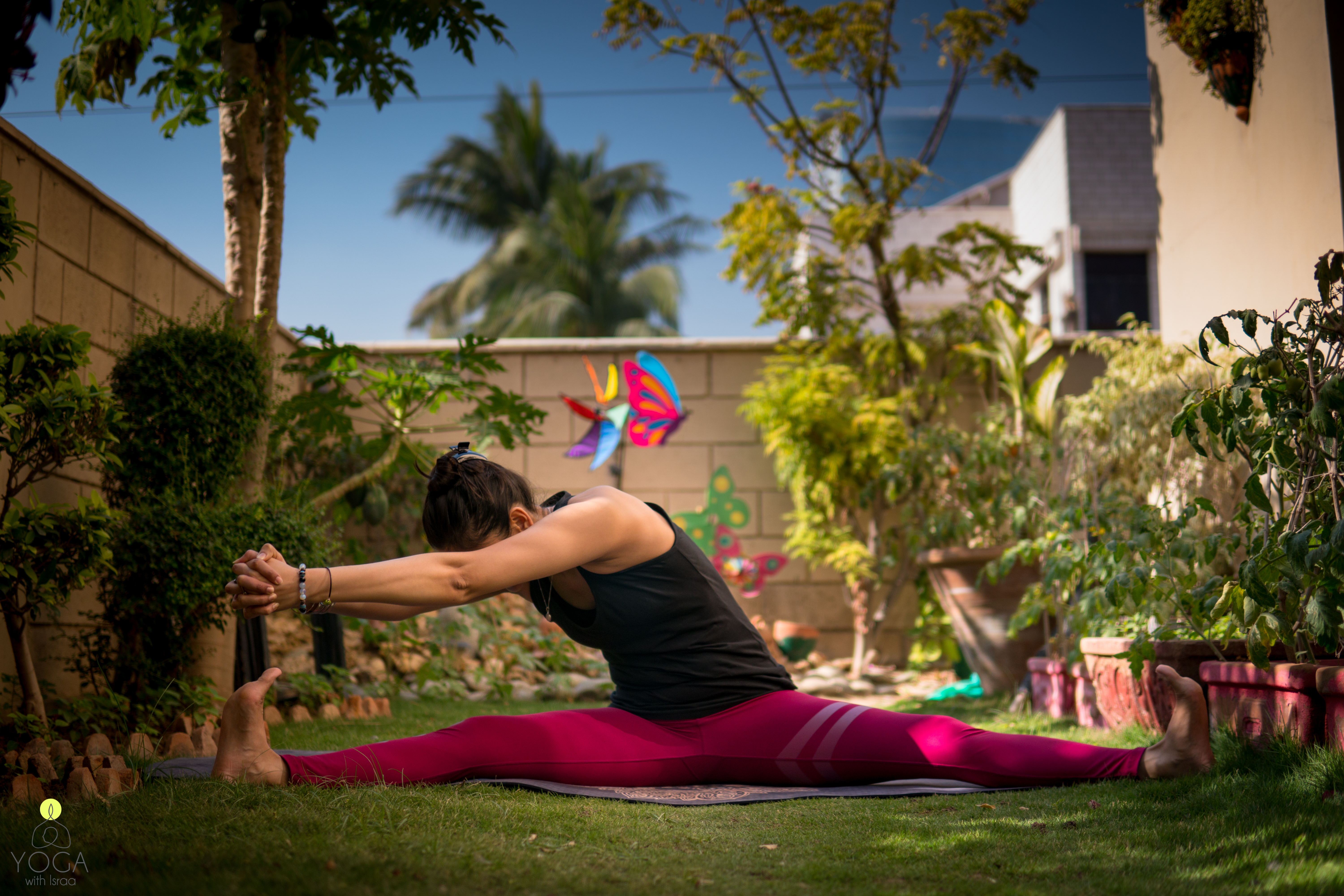
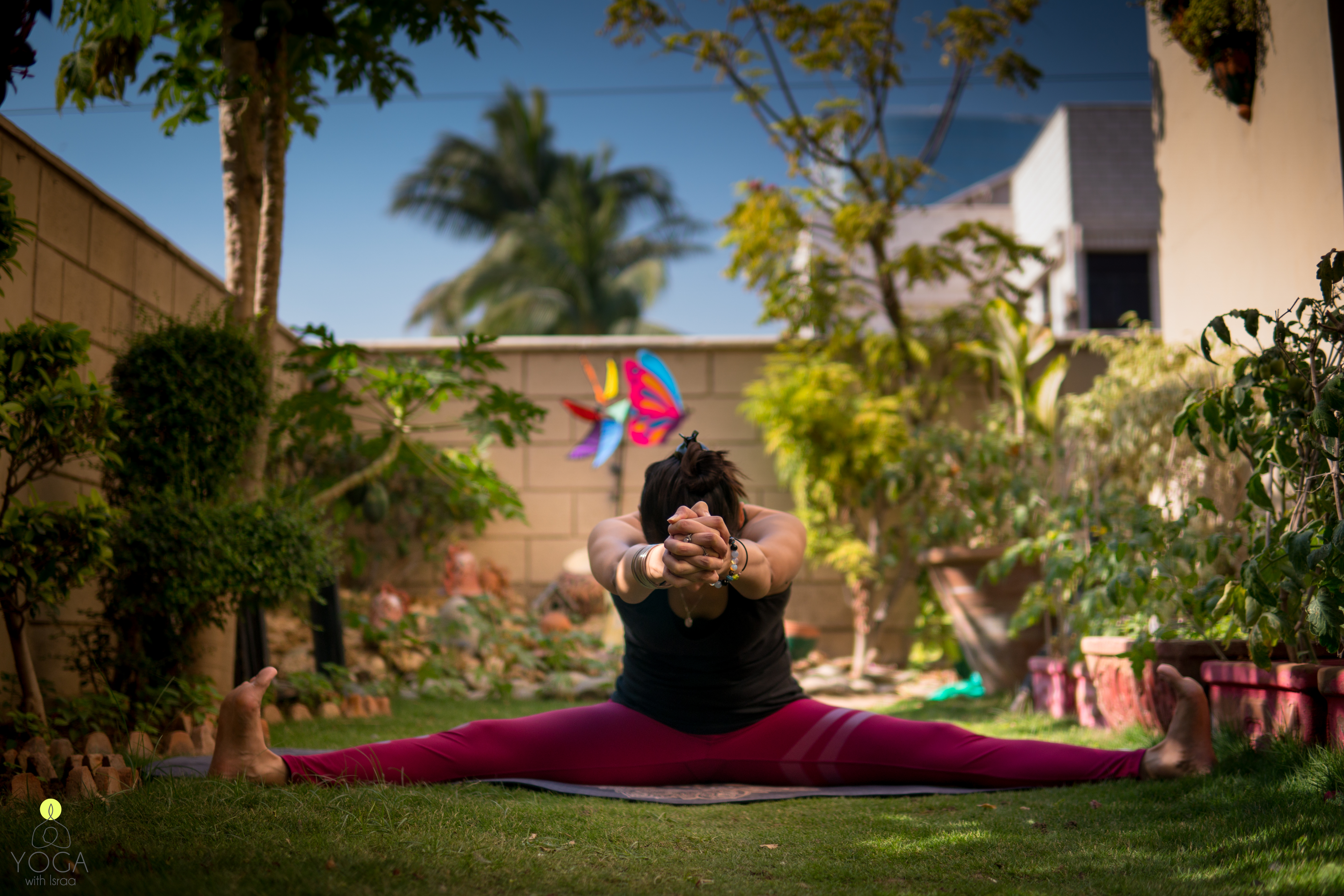
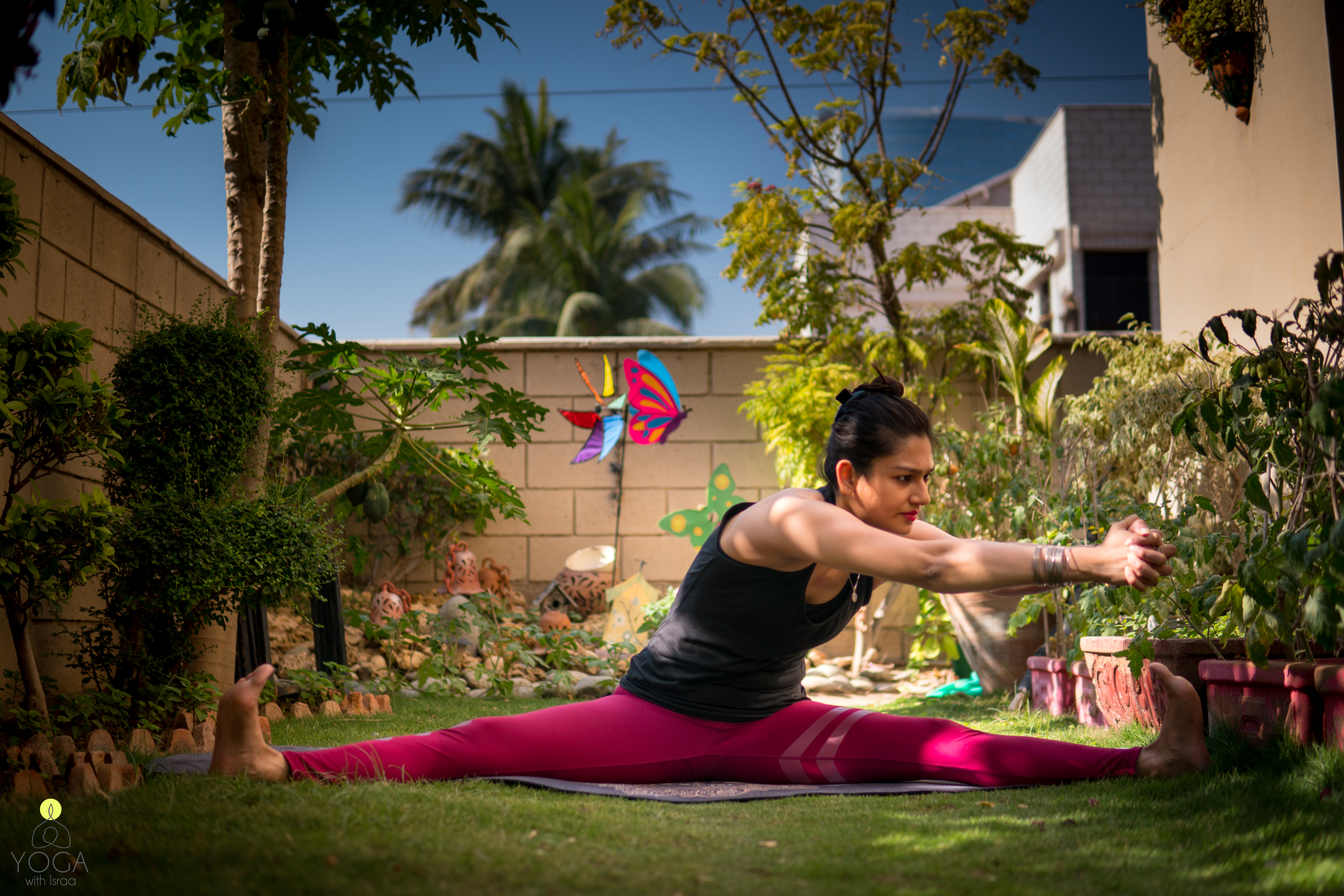
 Breathing: Inhale when you lean back and exhale when moving forward. Observe the movement and sensation in the lower back, hips and pelvic area along with your breath.
Breathing: Inhale when you lean back and exhale when moving forward. Observe the movement and sensation in the lower back, hips and pelvic area along with your breath.
Benefits: If practiced regularly it helps in regulating menstrual cycle and PCOS. It helps in toning the abdomen area, arms, back and pelvis. It works on opening the groin and hip. It’s also excellent for post natal recovery.
2. Bitilasana and Marjaryasana (cow and cat pose):
Technique: Begin in table top position, wrist below the shoulders (shoulder distance apart ), your hips should be aligned right below your hip points (hip distance apart) and keep the toes curled or place the tops of your feet on the mat. Keep your spine straight and core engaged by pulling the navel in towards the spine. Spread the weight of your body evenly on your hands and legs and observe the natural flow of breath in this position.
As you move into cow position; Inhale as you to lift the tail bone up, drop the belly down, lift the heart/chest forward and raise the head up. Move the shoulders away from the ears to ensure not to cringe your neck. Expand the belly and lungs with your inhale. Hold it for 3 to 5 counts. Moving into cat pose; Exhale as your round your spine and pull the navel in tight towards the back of your spine with your head between the arms (imagine pushing away from the ground). Hold it for 3 to 5 counts as per your comfort. Tip: Fold a towel below the knees and hands, if you feel major discomfort.
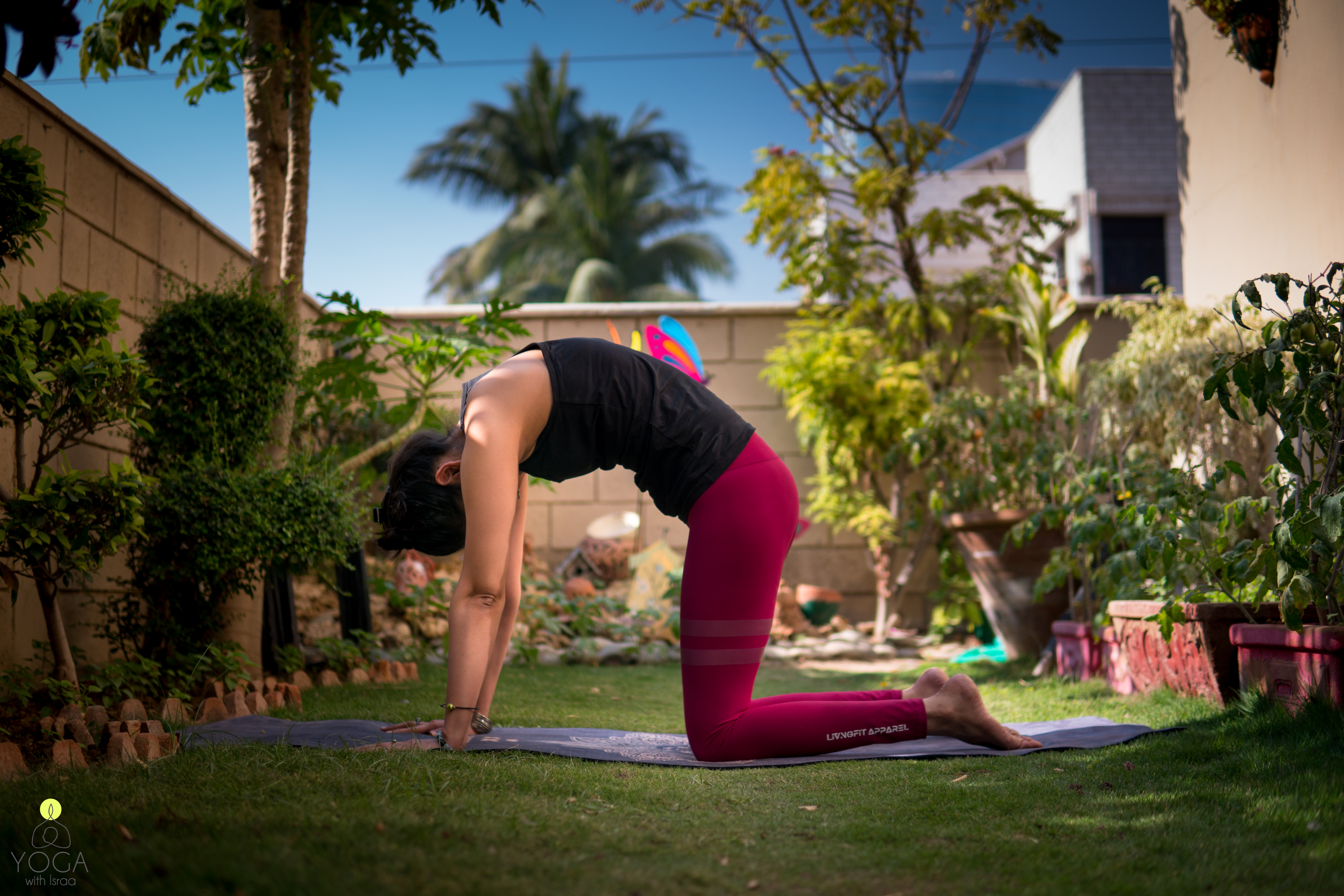
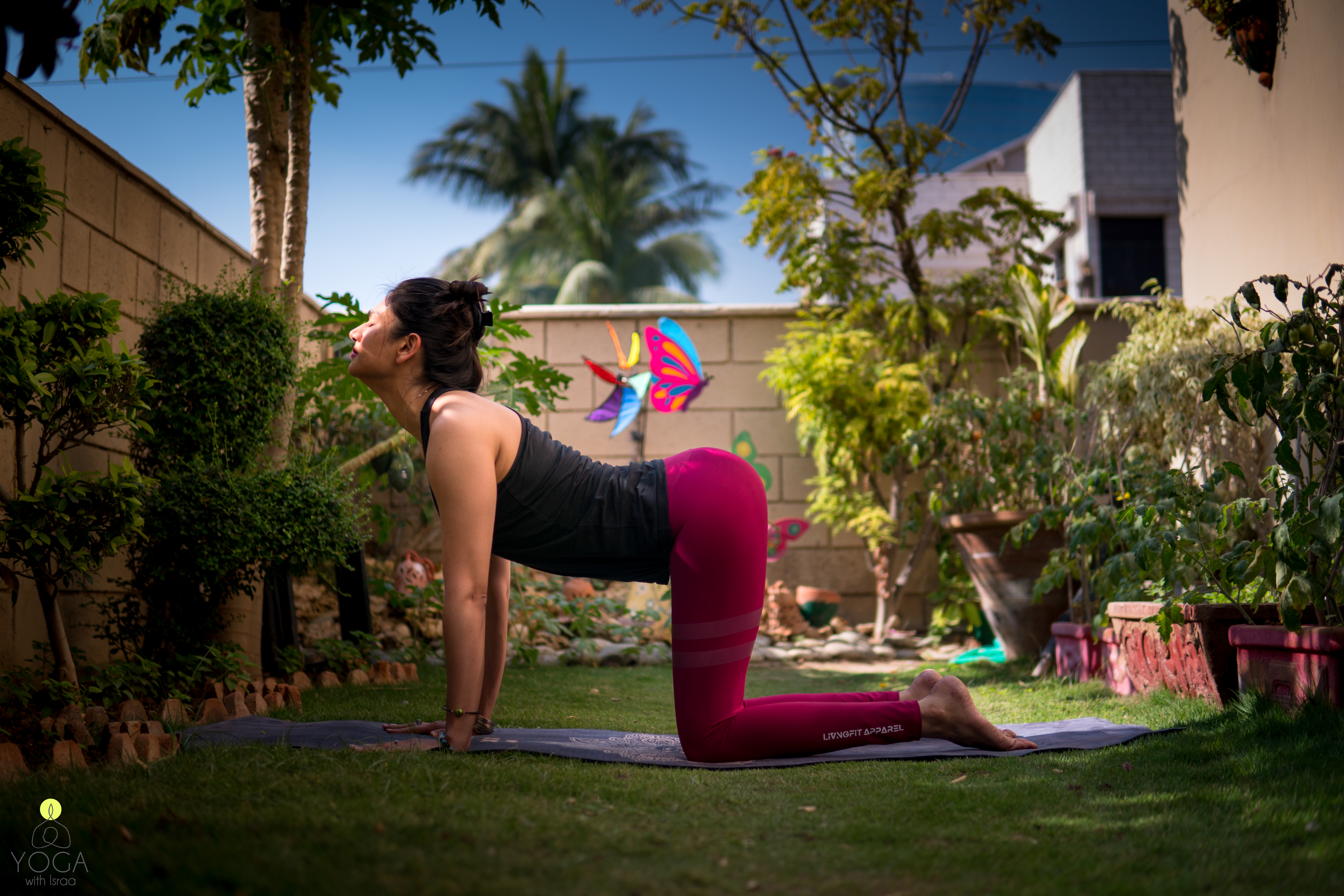
Benefits: This asana is beneficial for building flexibility in the spine, neck and shoulders. It is recommended for strengthening the spine and it also gives relief for back pain. It tones the reproductive organs, helps to relieve stress from menstrual cramps and ‘leucorrhoea’. The flow stretches the hips, back, abdomen, chest, and lungs.
RELATED: Can Yoga Lower The Risk Of Diabetes?
3. Setubandha Sarvangasana or Kandharasana (Bridge pose or shoulder pose):
Gently breathe as you lie down on your back and relax your shoulders, spine with palms facing down on the ground. Observe and breathe through the entire length of your spine as you allow it to relax towards the ground. Prepare for the pose by bending your knees with soles of your feet flat on the ground and your heels close to your buttocks. Keep the knees and feet hip distance apart.
Get into the starting position by grabbing the ankles with your hands and if you feel this isn’t accessible to you then rest the arms by your side with palms facing down. Inhale as your lift the hips and arch the back upwards. Raise the navel up towards the ceiling and lift the chest towards the chin without any strain.
Hold the pose as long as you feel comfortable and please breathe normally if you cannot hold the breath in this position. Keep in mind that you are resting on your feet, shoulders, arms, neck and head in the final position with only your hips, spine and chest lifted off the ground. Try not to move your knees out as lift up and be aware of not moving your neck as it could prove injurious. Exhale and release back to the ground. You can do 5 to 10 rounds of this. Avoid this pose during pregnancy or If you have stomach ulcers, abdominal hernia.
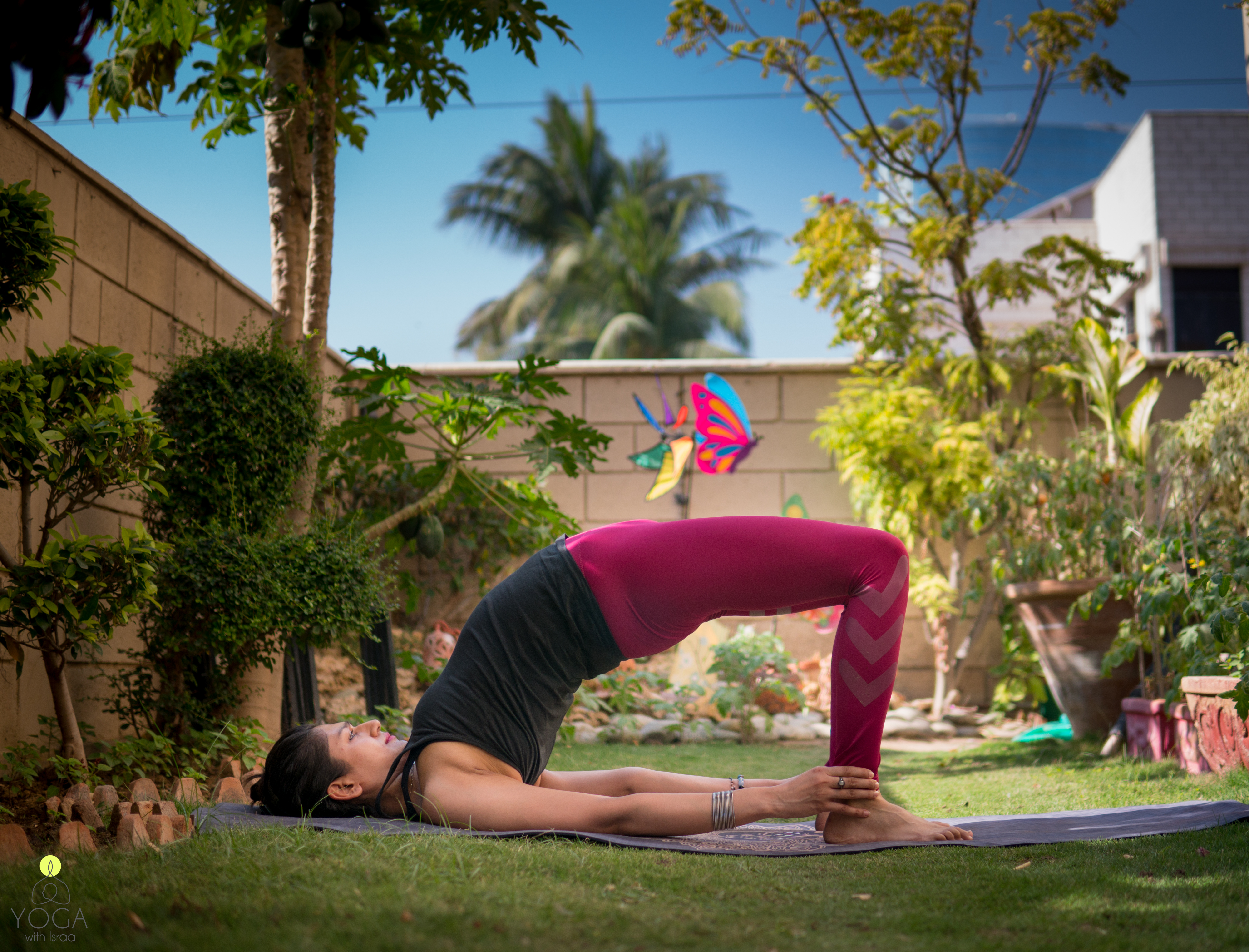 Benefits: It helps in eliminating rounded shoulders; re aligns and strengthens the spine. It massages the colon and internal organs at the lower abdomen. It’s beneficial for the female reproductive organs, menstrual disorders, and asthma and thyroid conditions.
Benefits: It helps in eliminating rounded shoulders; re aligns and strengthens the spine. It massages the colon and internal organs at the lower abdomen. It’s beneficial for the female reproductive organs, menstrual disorders, and asthma and thyroid conditions.
4. Bhujanghasana (cobra pose):
Technique: Lie down flat on the belly, legs stretched out straight, with tops of your feet facing down and together. Place the palms flat on the ground, slightly under the shoulders but by the side of your chest. Bend the elbows and hug them into your ribs. Rest the forehead on the ground. Engage the tops of your feet, thighs and pubic bone towards the ground. This is your starting position.
Inhale into the final pose by pushing the palms down, raise the head, chest and shoulders off the ground; lift through the heart by pushing the shoulder blades forward and keep the elbows engaged in towards the ribs. Relax the shoulders away from the ears and press the pubic bone down towards the ground. Avoid locking the elbows straight and don’t worry about lifting your chest too high off the ground. Hold the final position by retaining the inhale or breathe normally. Exhale as you return to the starting position by relaxing the upper body and forehead to the ground. You can practice up to 5 rounds and work towards holding the cobra for longer durations.
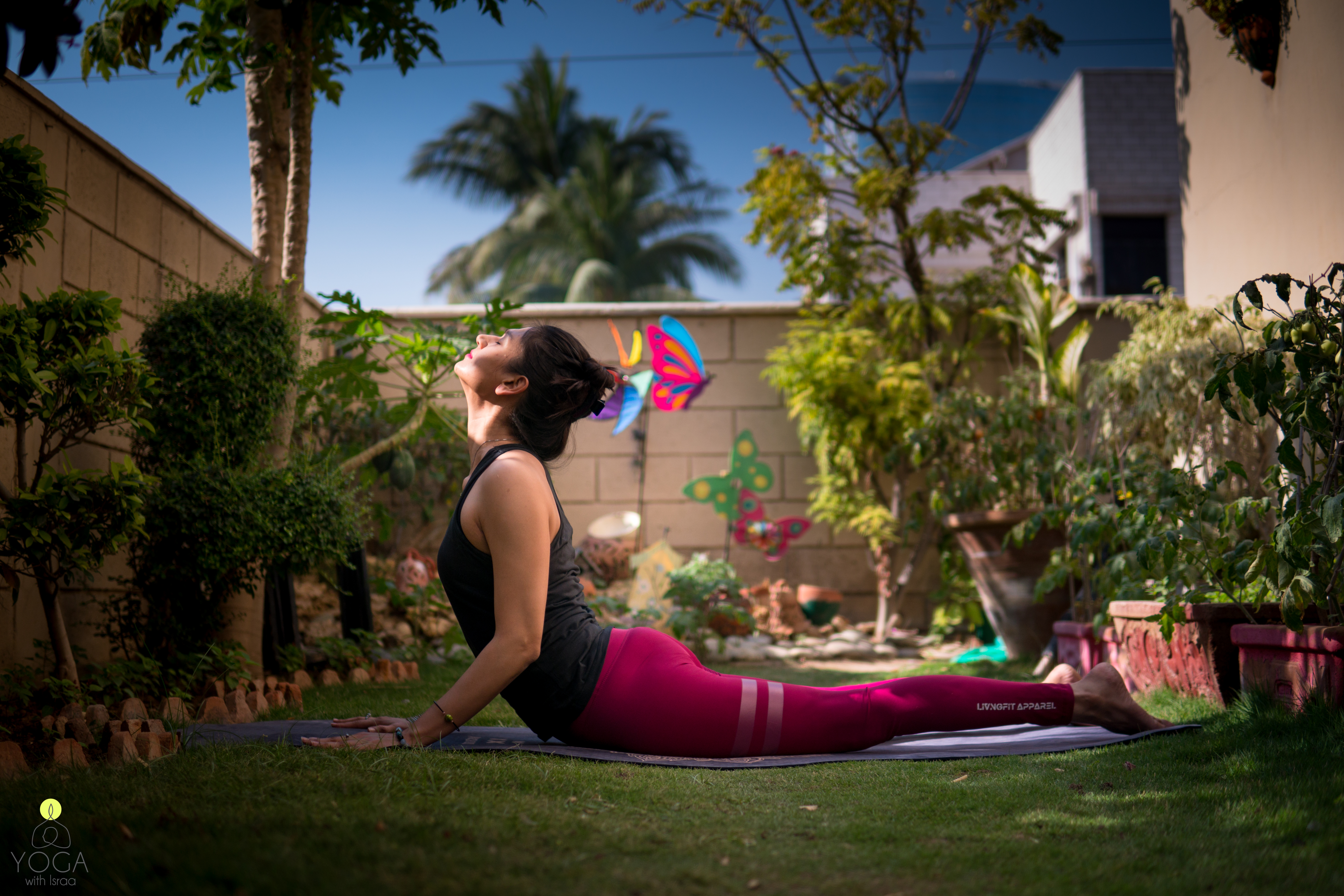 Benefits: Cobra improves breathing as it opens and stretches the chest and lungs. It helps in the strengthening and flexibility of the spine. For women it helps in gynecological disorders, menstrual management; it tones the ovaries and uterus. It plays a vital role in maintaining kidney health as the adrenal glands, situated on top of the kidneys, receive a good massage which improves the functionality and efficiency. The hormones secreted of these glands are good for our mind and body and relieves us from tension. It enhances digestion as it massages the stomach, pancreas, liver and gall bladder.
Benefits: Cobra improves breathing as it opens and stretches the chest and lungs. It helps in the strengthening and flexibility of the spine. For women it helps in gynecological disorders, menstrual management; it tones the ovaries and uterus. It plays a vital role in maintaining kidney health as the adrenal glands, situated on top of the kidneys, receive a good massage which improves the functionality and efficiency. The hormones secreted of these glands are good for our mind and body and relieves us from tension. It enhances digestion as it massages the stomach, pancreas, liver and gall bladder.
RELATED: Yoga For Weight Loss – 4 Yoga Poses To Get In Shape
5. Yogic Breathing or Diaphragm breathing:
Technique: It is essential to focus your attention on your breath as it is the source of your energy. Your body has to exert more when you breathe faster; therefore it creates stress within the body. In order to find equilibrium within ourselves, we need to become aware of our breath, slow it down and deepen it. Diaphragmatic breathing helps manage depression, anxiety, respiratory illnesses, cardiovascular system and digestion problems. You can practice Diaphragm breathing either sitting down with your spine straight or you can lie down. Gently place your left hand on your chest and right hand on your belly.
Begin to pay attention to your breathing pattern. Inhale through your nostrils for 7 seconds, first fill your abdomen slowly and then take your breath towards the chest (abdomen 3 seconds and chest 4 seconds). Gently exhale though the nostrils for 8 seconds, first through the chest and then through the abdomen (4 seconds chest and remaining 4 seconds abdomen).
Remember to breathe without any forceful exertion. Don’t worry if your inhales don’t reach up to 7 seconds; use it to measure your progression as you improve your breathing pattern. Keep in mind that you when inhale you inflate like a balloon and when you exhale you deflate.
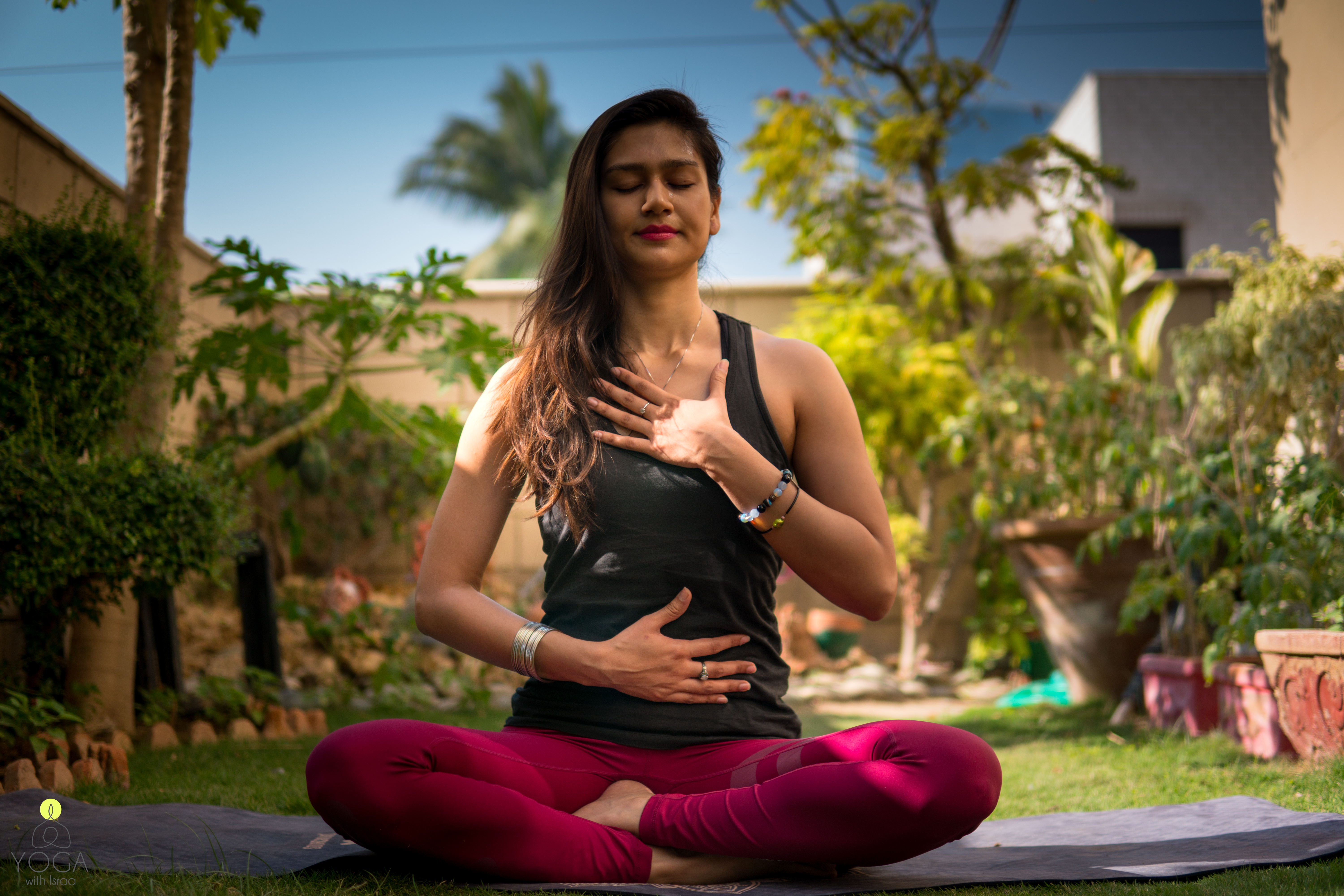 Benefits: Pranayama allows one to take deep and slow breaths to activate the parasympathetic nervous system to induce calmness in your body as well as in your mind. Deep breathing allows more oxygen to enter your body and can further help relieve the pressure on the neck and upper chest muscles.
Benefits: Pranayama allows one to take deep and slow breaths to activate the parasympathetic nervous system to induce calmness in your body as well as in your mind. Deep breathing allows more oxygen to enter your body and can further help relieve the pressure on the neck and upper chest muscles.
Regularly practicing pranayama (yogic breathing) can help one to gain more control on their breath, and remain in control even during stressful circumstances. Pranayama can also slowly build your focus and create a deeper connection and awareness of your thoughts. By consistently bringing your focus on your breath, a person becomes more aware and in control of their mind.
Written by Yogi Israa Shafi
Find her on Instagram: Instagram.com/yogawithisraa/?hl=en
Photo credit: Omer Bashir and Orouge Photography

